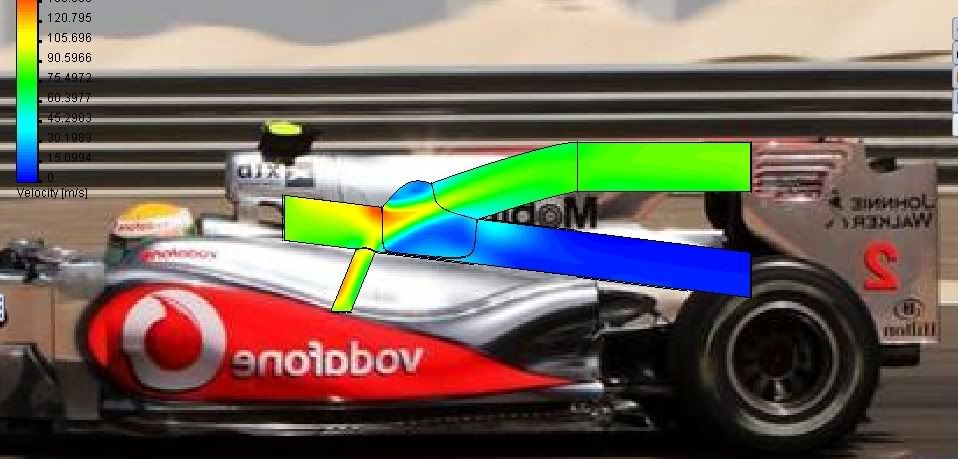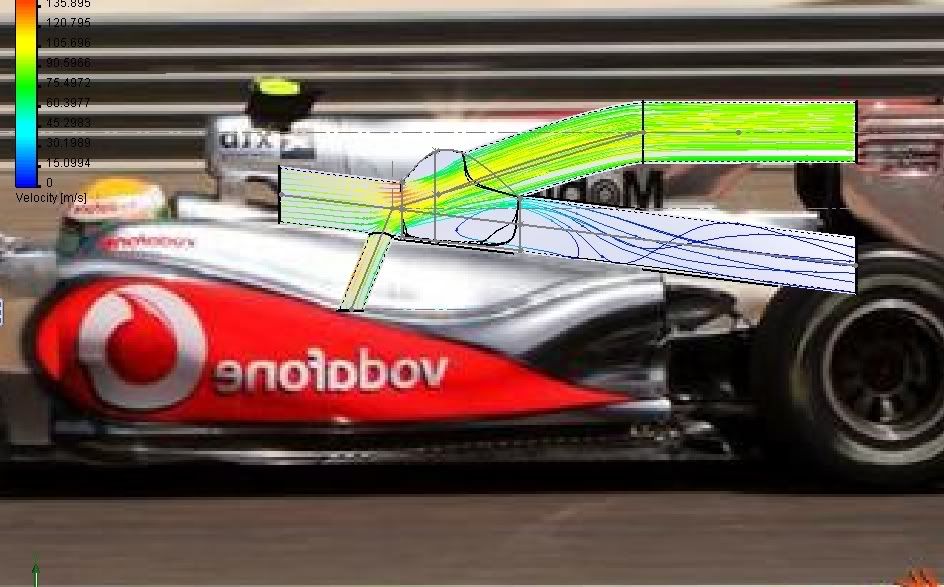The snorkel is a diversion. It seems I am going back and forth on the idea, but after some little analysis, i have come to realize that the system can work passively without a snorkel.
If the snorkel theory is true, the snorkel does not flow to the wing, if anything it flows to a chamber where it can influence the flow coming from under the engine air inlet. More like the fluidic amplifier.
Upon doing some tests, this snorkel flow does not need to be activated to change the flow direction from the pipe on the bridge wing (lower outlet) to the fin (outlet in the rear wing).
I think the flow in the engine cover is controlled by pressure differential between the bridge wing's top surface and the underside of the rear wing.
The flow will go to whichever route has the greater potential difference to inlet. At high speeds suction under the wing will encourage the flow to take this path instead of the path of pipe to the bridge wing. Both have suction, but the wing's suction is much lower; so easier path.
It should be possible to tune the pressure differential and when the wing stalls by playing around with the shape of the pipes and chamber, and also the angles with which they meet.
This is an example of what i thought was happening. This is when the pipe is on.


It works to collide with the air from the inlet, but it is redundant when the flow will turn by itself at speeds. If anything a knee controlled snorkel is a fail safe to force the air to deflect, if for some reason the passive system is not working. Or if the driver wants to force the stall when the car is bellow the tuned stall speed.
In summary, the snorkel could be a fail safe, or just a cooling device since it does not need to be on at high speeds to put air into the fin. At least this is what i think... for now.
I'll soon put up a little transient video i've done. It's suppose to show what happens in the valve when the car accelerates from a standstill up to 200+ mph. It shows where the passive system comes into action. Don't hold your breath though, I could be wrong and my video may not be the best cfd video!! just entertaining the convo.





